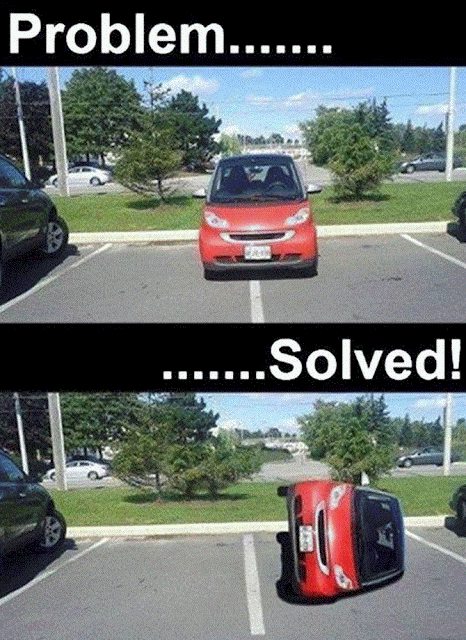Review “Writing as an Engineer”
Designed for students that have writing assignments in any class, has several computers where you can work on your assignments.
Proposal→Report
Walk through the engineering design method:
PGR.BAT.DCCR
- Define the problem you want to solve
- List specific goals
- Include background research on your product
- List the ideas you brainstormed
- Analyze & test your ideas
- Decide what project your group will work on
- Communicate your choice → Proposal, Report, Final Presentation
- Commercialize - post it on Kickstarter, or a creative commons site. Share your idea so it does not die at the end of the semester!
- Review - if you had another 6 months to work on it, what would you change?
Proposal→Report
The proposal will turn into your report by the end of the semester. Even though you have not built anything yet, you should be able to include a sketch of the design, plans on how it will be tested, and have all your background research done in the proposal.
Heading:
Centered on page: Name of your product (pick a catchy name!)
List team member names with their contribution,

The No Totter Water Potter
Jack – Research competition & PR
Jill – Construction, design sketches
Mary – Testing - experimental design, set up data sheets & testing methodologies
Centered on page: Name of your product (pick a catchy name!)
List team member names with their contribution,

The No Totter Water Potter
Jack – Research competition & PR
Jill – Construction, design sketches
Mary – Testing - experimental design, set up data sheets & testing methodologies
Joe – Research problem & technical issues.
ENGR1201, LSC-KW
Semester, 20**
ENGR1201, LSC-KW
Semester, 20**
1. Introduction (5 points)
Briefly state the product you decided to create, what need it will fill, who it will be marketed to, and why you chose this product.
ex – Jack and Jill have sustained serious injuries transporting water to their home by hand, so we created a clean drinking water transportation and containment system. Fresh spring water from the top of high hill is now safely delivered through insulated polyvinyl chloride piping to sun heated and ground cooled storage tanks located right next to their home.
2. Research and Background information (10 points)
As can be seen on the map in figure 2.1, on top of High Hill, at the headwater of Slippery Stream, lies Clearwater Spring. The spring water is purified through a natural filtration process where the groundwater seeps through rocks and soil (1). This water was last tested on Nov 28, 2016 by AAAEnviroWet and was found to be exceptionally pure (2). →use "insert end-notes" to easily create a numbered reference section.
As can be seen on the map in figure 2.1, on top of High Hill, at the headwater of Slippery Stream, lies Clearwater Spring. The spring water is purified through a natural filtration process where the groundwater seeps through rocks and soil (1). This water was last tested on Nov 28, 2016 by AAAEnviroWet and was found to be exceptionally pure (2). →use "insert end-notes" to easily create a numbered reference section.
Use the automatic formatting features in word for your report:
- Numbered headings and subheadings
- Figures, tables, and graphs should be referred to and discussed within text. Use captions and cross-references.
- Include a reference section, and (3) add corresponding reference numbers to body of report.
.
3. Product specifications, diagrams, pictures, and user instructions. (25 points)
Older lead pipes on the High Hill property will need to be removed, and replaced with insulated polyvinyl chloride piping installed according to rhyme building code specifications (4). A splitter valve will divide the water flow into an above ground black solar hot water pot, and an underground cold water pot where it is stored until needed as shown in figure 3.1.
4. Testing , testing methods, modifications, and operation procedures. (25 points)
Water purity, pressure, and temperatures were tested throughout the system at various weather conditions as shown in Table 4.1. ...
Proposal: Plan out what tests will be performed. Create data sheets, decide on sample sizes, write testing procedures.

... Fill the rest of the report in by the end of the semester...
After consideration of the data, a pressure relief valve was installed to prevent rupture of the solar heater during hot summer months, and an air injection line was installed to blow water out of lines susceptible to freeze in the winter. Operating procedures for both summer, and winter months are presented below….
4. Testing , testing methods, modifications, and operation procedures. (25 points)
Water purity, pressure, and temperatures were tested throughout the system at various weather conditions as shown in Table 4.1. ...
Proposal: Plan out what tests will be performed. Create data sheets, decide on sample sizes, write testing procedures.

... Fill the rest of the report in by the end of the semester...
After consideration of the data, a pressure relief valve was installed to prevent rupture of the solar heater during hot summer months, and an air injection line was installed to blow water out of lines susceptible to freeze in the winter. Operating procedures for both summer, and winter months are presented below….
5. Observations, Results and Discussion (25 points)
The variable water flow rates resulting from seasonal weather changes shown in Table 5.1 were used to calculate the storage tank size needed to ensure a constant water supply through the entire year. Seasonal weather changes also affected the solar water heater temperatures, and additional gas or electric heating may be required in winter months.
.
The variable water flow rates resulting from seasonal weather changes shown in Table 5.1 were used to calculate the storage tank size needed to ensure a constant water supply through the entire year. Seasonal weather changes also affected the solar water heater temperatures, and additional gas or electric heating may be required in winter months.
.
6. Conclusions, suggestions for future work. (10 points)
Jack and Jill’s new “No Totter Water Potter” network is a vast improvement over the previous bucket and muddy path water transportation system. Although this new system has many advantages, the spring snowmelt runoff poses a possible threat to water purity in late April and May, and future mitigation for this is strongly suggested.
Correctly formatted, and numbered.Jack and Jill’s new “No Totter Water Potter” network is a vast improvement over the previous bucket and muddy path water transportation system. Although this new system has many advantages, the spring snowmelt runoff poses a possible threat to water purity in late April and May, and future mitigation for this is strongly suggested.
Reference Section
Project Presentation & Proposal Pitch:
Either make a video advertising what you have created, or post your idea in an online community.
Presentations should be
Presentations should be
Total presentation should be no longer than 5 minutes. Post all presentation materials in project D2L drop box & in discussion forum. Presentations will be graded on enthusiasm, clarity, organization, body language, voice projection, visual aids, content, etc.

Advertise your product!
Create a pitch video.
Create a pitch video.
How to advertise:
1. Tell a story
2. Connect story with a desire to act (desire to buy your product)
3. Use emotional appeals - people are more likely to remember what they are emotionally attached to
eight basic universal emotions:
- joy,
- surprise,
- anticipation,
- acceptance,
- fear,
- anger,
- sadness,
- disgust.
4. Use inferences that allow audience to jump to conclusions without you having to say anything. Use riddles - allow audience to arrive at your correct answer themselves.
5. Show - rather than tell. Audience is skeptical about advertisers - what adds do you like? The adds that are trying to sell something? or the adds that tell a cute story, and just happen to have product placement in it? Seeing is believing - actions speak louder than words - use pictures, demonstrations.
6. Life is experienced through senses - feel, hear, smell, taste - incorporate all 5 senses into advertisement.
7. Coordinate audio and visual messages - keep everyone unified and coordinated with each other. Disorganized chaotic, not-unified = not impressive.
8. Pause - use silence - don't rush.
9. Let some things speak for themselves.
10. Music - poetry - catch phrase - title - name of product
Alternative Uses Test
J.P. Guilford in 1967
Creativity test - in two minutes, come up with as may alternatives uses as you can for a (fill in the blank - pencil, paperclip, brick, chair, etc.).
- responses graded on:
- Quantity - how many different uses you can come up with
- Originality
- Different areas (energy, transportation, food, art, infrastructure - different disciplines)
- Elaboration - level of detail in response
Apply the alternative use test to your product → more uses = larger audience = more clients
Post it note story - started as spray for a bulletin board (no one wanted the spray), alternative use - tried it as a bookmark → people took the book marks and started writing on them and sticking them on things other than books. After analyzing user response, the now famous post-it notes were created. Took many years, and experimenting with many different uses of the glue before it evolved into what it is today!
Example Presentation Eval:
Presentation grade:
50% based on the feedback and quality of comments you give other groups.
50% based on how other groups grade you.
Group: __________________
Grader: _______________________
PRESENCE
5 4 3 2 1 0
-body language & eye contact
-poise
-enthusiasm
-enthusiasm
LANGUAGE SKILLS
5 4 3 2 1 0
-correct usage
-appropriate vocabulary and grammar
-understandable (rhythm, intonation, accent)
-spoken loud enough to hear easily
ORGANIZATION
5 4 3 2 1 0
-clear objectives
-logical structure
-signposting ( the way they explain the path that was taken)
MASTERY OF THE SUBJECT
5 4 3 2 1 0
-pertinence
-depth of commentary
-spoken, not read
-able to answer questions
VISUAL AIDS
5 4 3 2 1 0
- Clear and understandable
- Demonstrates proficiency in CAD
OVERALL IMPRESSION
5 4 3 2 1 0
-very interesting / very boring
-pleasant / unpleasant to listen to
-very good / poor communication
TOTAL SCORE _______ / 30
List Strengths:
List at least one area for improvement:






































































